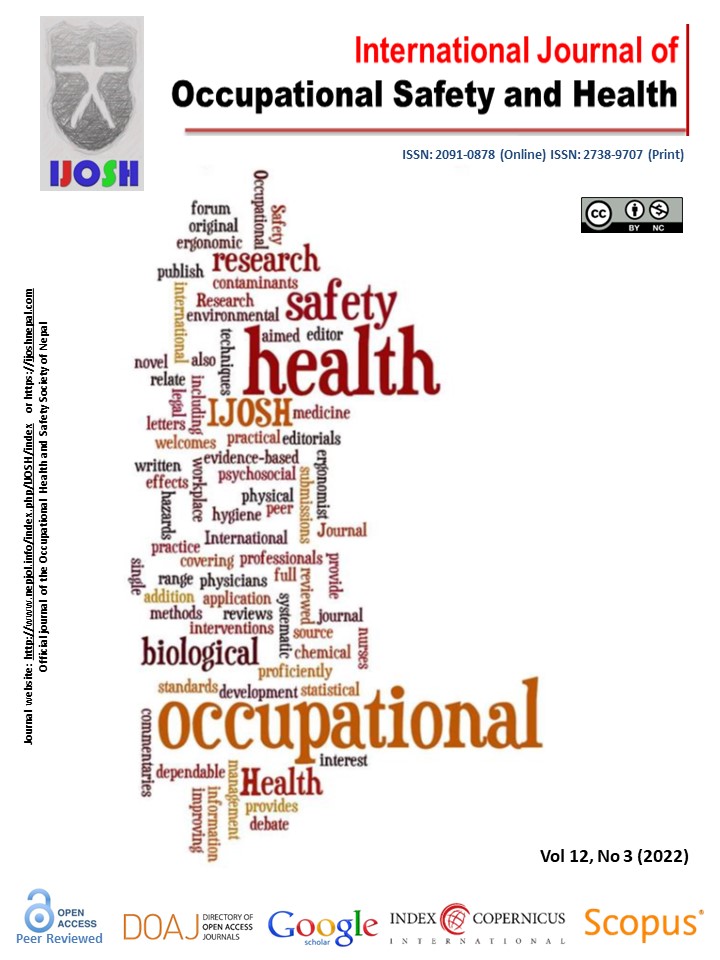Exploratory Analysis of the Nordic Safety Climate Questionnaire - Thai Version and Safety Climate among Thai Employees
DOI:
https://doi.org/10.3126/ijosh.v12i3.41414Keywords:
Safety climate, occupational safety, perception, worker, leaderAbstract
Introduction: High death and injury rates at work are continually reported by the Ministry of Labour, Thailand, despite the promotion of the occupational safety, health, and environment (OSHE) management system across all enterprises. To identify the gap between OSHE and workers’ perception in terms of safety climate in Thai organizations, the Nordic Safety Climate Questionnaire-Thai Version (T-NOSACQ) was used in this study.
Methods: The content validity index of the T-NOSACQ was assessed and this tool was employed to examine workers in six manufacturing firms and a tertiary care hospital between October 2015 and December 2016. Exploratory and confirmatory factor analysis was performed on the total dataset to justify the final questionnaire. Multiple regression analysis was performed to determine the factors related to the safety climate score.
Results: The final T-NOSACQ included 5 dimensions with a total of 42 items. The internal consistency of each subscale was in the range of 0.73–0.89. There were 1191 participants, including 88.9% workers and 11.1% leaders, who voluntarily responded to the questionnaire. The lowest safety climate score was obtained on the dimension ‘employees’ risk acceptance’, especially at factory A (2.67±0.45 and 2.92±0.45 for the worker and leader groups, respectively). The highest score was obtained on the dimension ‘employees’ engagement to safety, especially at factory F (3.30±0.33 and 3.46±0.42 for the worker and leader groups, respectively).
Conclusion: The safety climate in both leader and workers groups can be predicted by T-NOSACQ. Thai employees exhibited a positive perception of safety engagement. However, the OSHE management system in Thailand, especially employees’ risk acceptance, should be improved.
Downloads
Downloads
Published
How to Cite
Issue
Section
License
Copyright (c) 2022 Thitiworn Choosong, Supeecha Rungruang, Kittisak Choomalee, Thanita Sirirak

This work is licensed under a Creative Commons Attribution-NonCommercial 4.0 International License.
This license enables reusers to distribute, remix, adapt, and build upon the material in any medium or format for noncommercial purposes only, and only so long as attribution is given to the creator.





